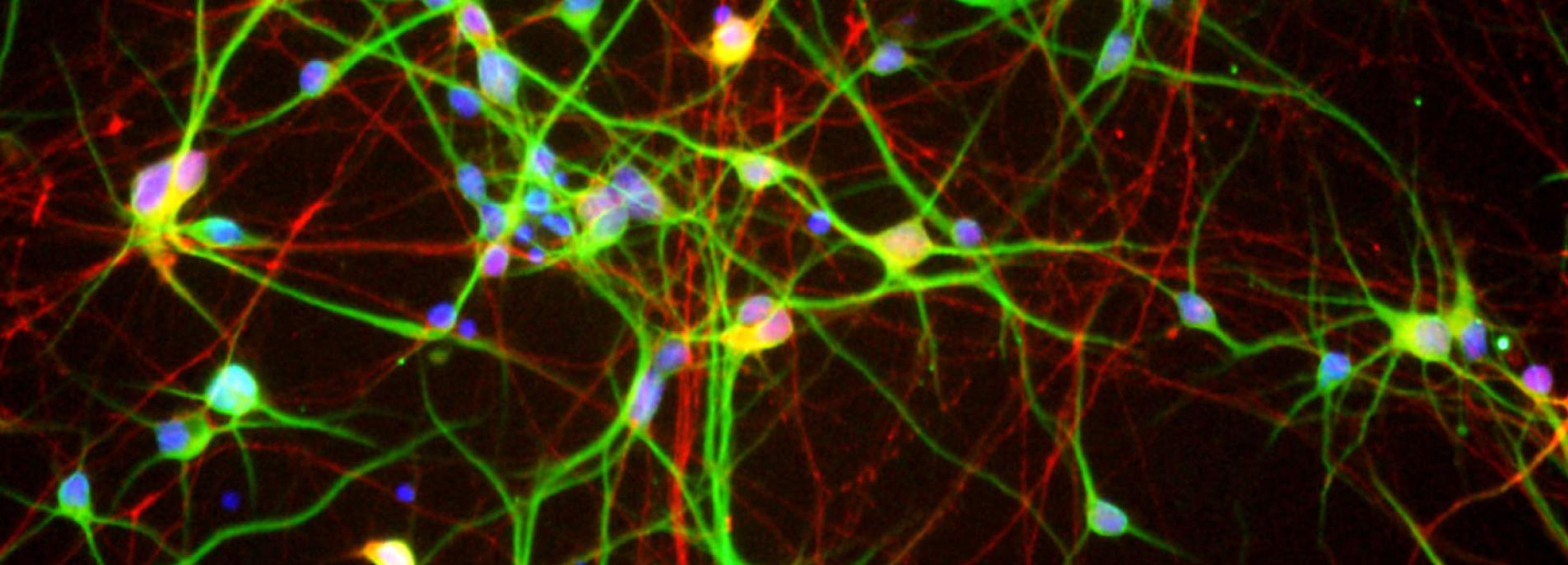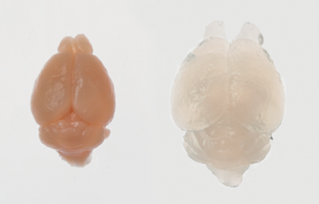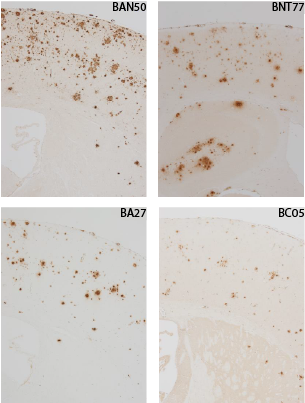
The Society for Neuroscience, one of the largest communities of neuroscience researchers in the world, celebrates its 50th annual meeting (Neuroscience 2021) from November 8 to 11, 2021. As a Platinum Sponsor, Fujifilm is proud to support the Society as it achieves this significant milestone.
As you read this, you might be wondering how Fujifilm, a company long-associated with cameras and photographic film, came to support a scientific conference – how exactly does Fujifilm fit in with neuroscience research?
In fact, supporting neuroscience research is an integral part of Fujifilm’s corporate mission. This article guides you through how Fujifilm assists the study of the brain and nervous system by delivering a range of laboratory and imaging solutions in pursuit of its overarching goal of making a positive impact on society through advances in life sciences.
The right tools for many discoveries to come
Science makes progress, and so should the technology that supports scientific research. Here are some examples of Fujifilm’s high-quality products that support the trailblazers in lab coats in their neurological explorations.
The brain has long been a hard-to-solve puzzle, as it is difficult to visualize the biological and chemical processes taking place inside this extremely complex organ. Fujifilm offers the neuroscience community two alternatives to solve this problem in animal models. The first is a line of tissue optical clearing reagents, including SCALEVIEW, used to render mouse brain tissue transparent for deep imaging. With a simple and reproducible method to clear tissues of their opacity, SCALEVIEW enables the study of 3D structures at unprecedented depths in morphologically intact, fixed samples. The second method uses ultra high frequency ultrasound and photoacoustic imaging with the Vevo® LAZR-X. Vevo technology offers a non-invasive, real-time imaging platform that is capable of assessing neurologically relevant parameters such as blood flow, perfusion, oxygen saturation, total hemoglobin and quantification of contrast reagents (dyes and nanoparticles) in 2D and 3D. Vevo® LAZR-X provides high resolution imaging – down to 30 μm, with imaging depths up to 3 cm at frame rates up to 10,000 fps. This makes the system suitable for stroke and brain cancer studies, as well as in utero ultrasound-guided intracranial injection in small animal models.

Fujifilm also offers products that enable new approaches to study the human brain and model neurodegenerative and neurodevelopmental diseases. With a comprehensive panel of induced pluripotent stem cell (iPSC)-derived healthy neurons and disease models, Fujifilm provides a range of tools empowering scientists to model neurotoxicity, neurodegeneration, and neuroinflammation in vitro. iCell® Microglia, derived from both healthy donor and Alzheimer’s disease patient iPSCs, provide biologically relevant models that circumvent the limited availability and inconsistency of primary human microglia that has constrained Alzheimer’s disease research and therapeutic progress. For Parkinson’s disease research, Fujifilm offers iPSC-derived human midbrain floorplate dopaminergic neurons, iCell® DopaNeurons, and isogenic, genome-engineered neurons with nuclease-mediated SNP alterations that introduce a site-specific mutation in the α-synuclein (SNCA) gene, iCell® DopaNeurons PD SNCA A53T. The availability of donor-specific iPSCs, coupled with gene-editing techniques, provide a powerful in vitro disease modeling system amenable for drug development and screening studies.
Covering a wide range of applications, hosts and species cross-reactivity, Fujifilm provides high-quality amyloid β, tau and α-synuclein antibodies and ELISA kits for Alzheimer’s and Parkinson’s disease research. A gold standard for microglia detection, Fujifilm’s Anti Iba-1 antibodies are also available with a variety of labels to suit your research needs in Western blotting and immunohistochemistry applications. Brain-derived neurotrophic factor (BDNF), a member of the neurotrophin family of growth factors, is involved in neurogenesis and synaptogenesis. With mounting evidence of BDNF’s involvement in developmental defects in the brain and sensory nervous system, and neuropsychiatric disorders, Fujifilm launched ELISA kits for luminescence and colorimetric detection of mature BDNF (mBDNF). These kits were developed with new mBDNF detection technology that combines very high specificity and detection sensitivity, and are expected to contribute to a better understanding of psychiatric diseases.

Fujifilm continues to deliver innovative solutions for neuroscience researchers, leveraging its portfolio of technology and expertise amassed and shared within its group companies.
Harnessing the history of innovation
Fujifilm was established as a photographic film manufacturer. A few years after its foundation, the company added X-ray films for medical imaging to its product portfolio. With a commitment to quality at the core of its corporate philosophy, Fujifilm has expanded its offerings to medical devices and equipment, and recently to life science products and services.
In the fiscal year 2019, Fujifilm’s medical/life science business generated approximately 4.6 billion US dollars (109 JPY = 1 USD) in revenue, which accounted for 22 % of the company’s consolidated revenue. With multi-billion-dollar investments made in the past 10 years to better serve the health sciences, Fujifilm is not a mere photographic company anymore – it is a company driven by the purpose of improving human health.
A journey of a thousand miles
According to the WHO, neurological disorders are estimated to account for 12.2% of total deaths in 2030 (*1), affecting the lives of millions of patients, families, and caretakers worldwide. Dementia alone affects 47.5 million people globally, with Alzheimer’s disease being the most common cause (*2). More than 10 million people worldwide are living with Parkinson’s disease (*3), the second most common neurodegenerative disease.
In addition to providing diagnostic imaging platforms, Fujifilm took the extra step to address these unmet research needs – engaging in the development of new therapies.
To provide hope for patients now and for the future, Fujifilm is developing T-817MA (1-{3-[2-(1-benzothiophen-5-yl) ethoxy]propyl}-3-azetidinol maleate) for the treatment of Alzheimer’s disease. T-817MA emerged as a therapeutic candidate based on its protective potency against amyloid β (*4) -induced, and oxidative stress-induced neurotoxicity (*5) observed in rat cortical neurons co-cultured with glia. Besides its neuroprotective effects, T-817MA also facilitates neurite growth in hippocampal slice cultures and reaggregation culture of rat cortical neurons. Moreover, T-817MA prevents the progression of motor deficit and the loss of spinal cord motor neurons, while significantly attenuating spatial memory impairment and reduction in synaptic terminal density in the hippocampal dentate gyrus of tau-P301L transgenic mice. Fujifilm has announced the completion of phase II clinical trials for T-817MA in the US, and began recruiting patients for a phase II clinical trial in Europe in 2019.
Existing treatments for Parkinson’s disease have been limited in their capabilities to prevent the progressive loss of dopaminergic neurons. FUJIFILM Cellular Dynamics leverages its technologies and know-how to provide midbrain dopaminergic neural progenitors for an “off-the-shelf” cell replacement therapy with the goal of bringing long-term improvement to patients.
And yet, so many things remain undiscovered about the brain and nervous system. Today’s neuroscience research – driven by scientists’ boundless passion and desire for understanding the mechanisms that underlie neurological disease – paves the way for therapeutic innovations in the future. This is what motivates Fujifilm to empower neuroscientists – through its businesses, through conference events, and by providing financial assistance through the Fujifilm Fellowship program at Harvard Medical School.
Transformation of a neuroscience discovery into a therapeutic option and its delivery to the patients may require years, perhaps even decades of collaborative efforts. But it will not stop us from trying. Together, we can picture a healthier future, and at Fujifilm, we believe it starts here – supporting basic research endeavors.
References
*1 neurological_disorders_report_web.pdf (who.int)
*2 Mental health: neurological disorders (who.int)
*3 Statistics | Parkinson’s Foundation
*4 Hirata, K., Yamaguchi, H., Takamura, Y., Takagi, A., Fukushima, T., Iwakami, N., Saitoh, A., Nakagawa, M., & Yamada, T. (2005). A novel neurotrophic agent, T-817MA [1-{3-[2-(1-benzothiophen-5-yl) ethoxy] propyl}-3-azetidinol maleate], attenuates amyloid-beta-induced neurotoxicity and promotes neurite outgrowth in rat cultured central nervous system neurons. The Journal of pharmacology and experimental therapeutics, 314(1), 252–259. (PMID: 15798005)
*5 Fukushima, T., Koide, M., Ago, Y., Baba, A., & Matsuda, T. (2006). T-817MA, a novel neurotrophic agent, improves sodium nitroprusside-induced mitochondrial dysfunction in cortical neurons. Neurochemistry international, 48(2), 124–130. (PMID: 16219389)
Fujifilm makes no representation that products/services on this website are commercially available in all countries.

© 2024 FUJIFILM Holdings America Corporation